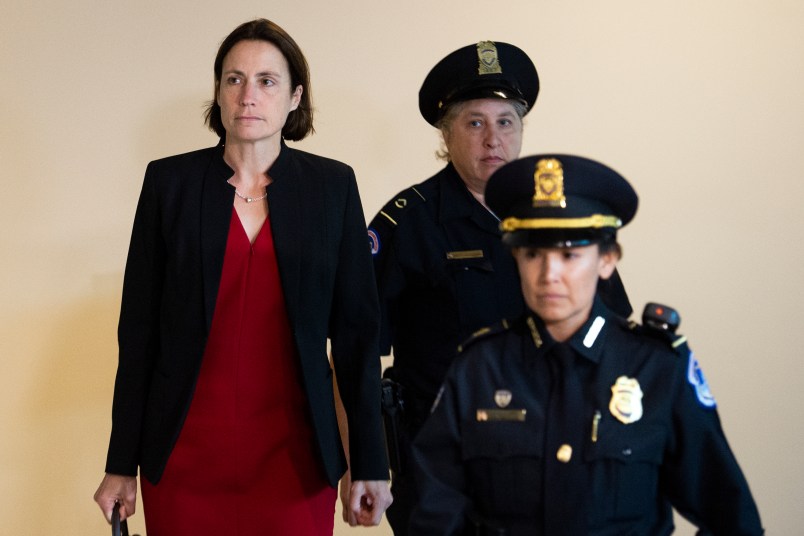President Donald Trump’s former top adviser on Russia Fiona Hill, who testified before three congressional committees Monday, objected “strenuously” to the firing of former ambassador to Ukraine Marie Yovanovitch, The New York Times reported.
Citing a person familiar with Hill’s planned testimony Monday, the Times reported that Hill saw Yovanovitch’s firing as an abuse of the system. The person said Hill would testify that she and others “objected strenuously” to Yovanovitch’s removal. Until recently, Hill served as the Russia expert on Trump’s National Security Council.
The Times also reported that Hill would testify that she objected to the July 25 call between Trump and Ukrainian President Volodymyr Zelensky. A White House memorandum later showed that Trump repeatedly pressed Zelensky during the call to look into topics that could be politically useful for Trump in 2020. Hill, the Times reported, didn’t understand the call’s purpose.
Per the Times’ source, Hill didn’t know Trump would use the call to press Zelensky for dirt on Joe and Hunter Biden. The Times reported that Hill would testify that she was “cut out of the loop as Mr. Giuliani and others ran a shadow diplomacy intended to benefit Mr. Trump’s political position,” in the paper’s words.
Several allies of the President, including his lawyer Rudy Giuliani, advocated for Yovanovitch’s removal. At least three people, including Giuliani and two men with whom he looked for dirt in Ukraine on Trump’s behalf, appear to have had early knowledge of Yovanovitch’s ouster.
Giuliani has acknowledged that he pushed Trump to remove Yovanovitch.
Hill was subpoenaed for her appearance Monday before the House Committees on Oversight, Intelligence and Foreign Affairs. After attempting to sit in on the interview, Rep. Matt Gaetz (R-FL) was booted from Hill’s deposition because he wasn’t a member of any of those three committees.
The Times reported that the White House has “exchanged letters with Ms. Hill’s lawyer about precedents regarding the confidentiality of presidential communications,” in the paper’s words.



